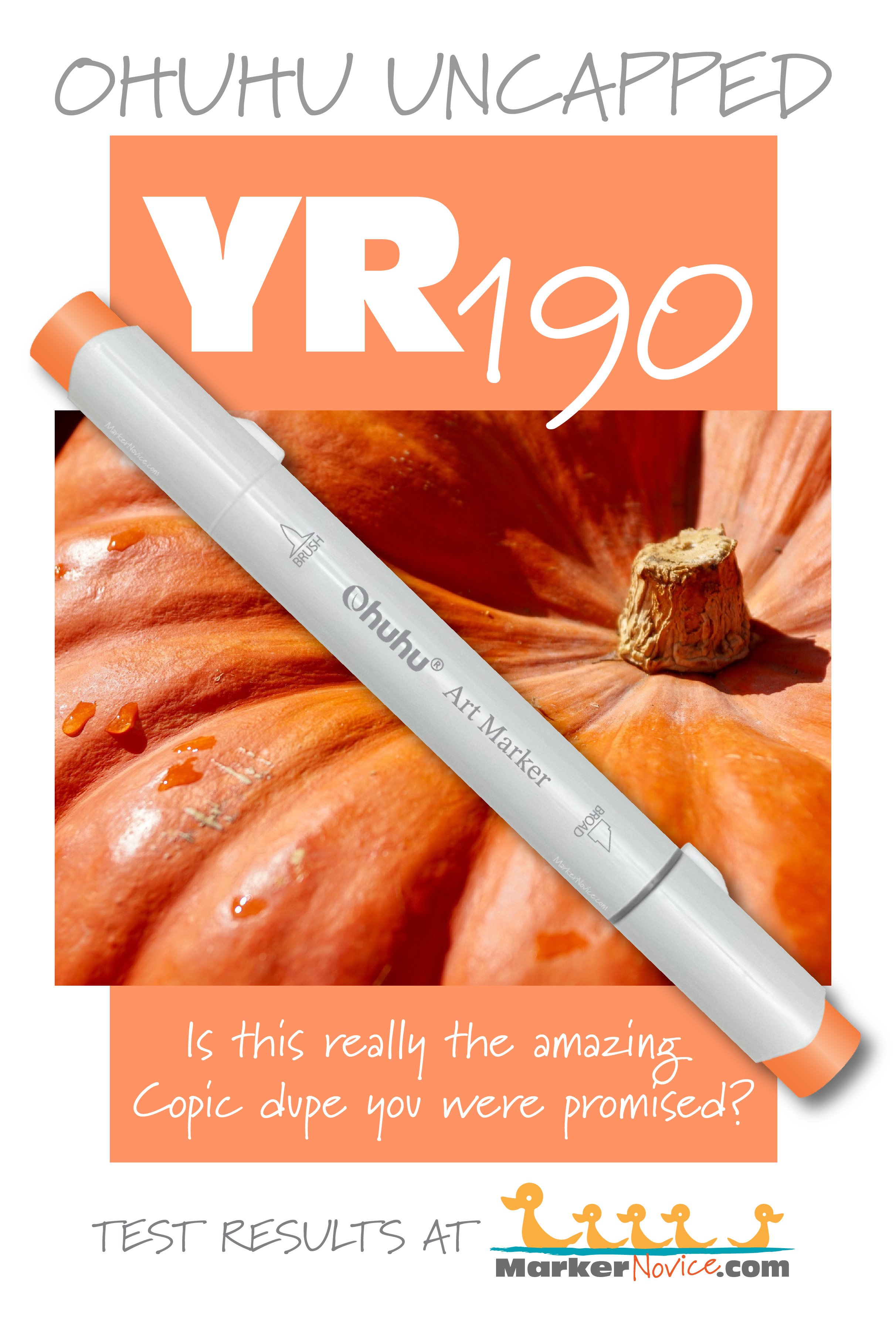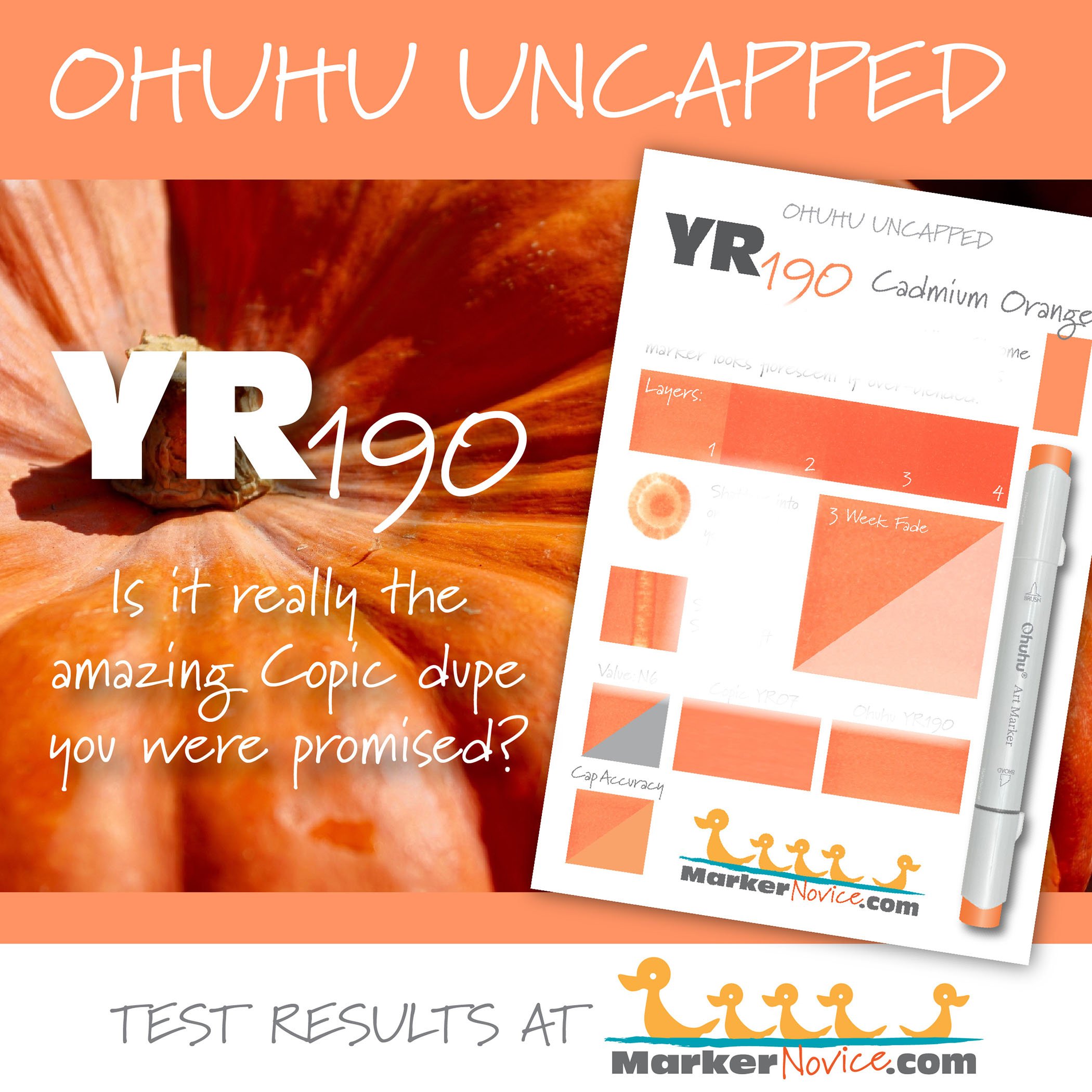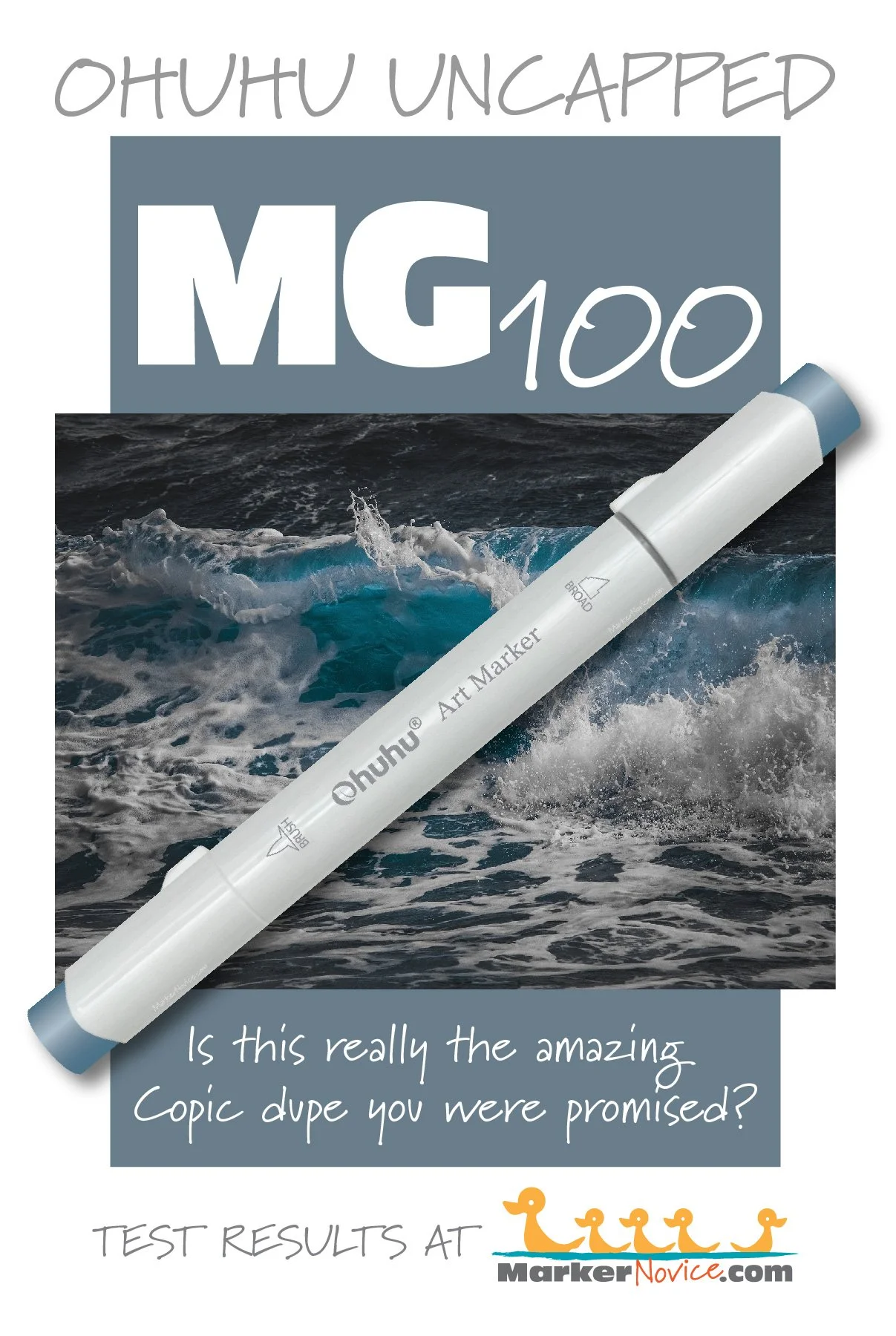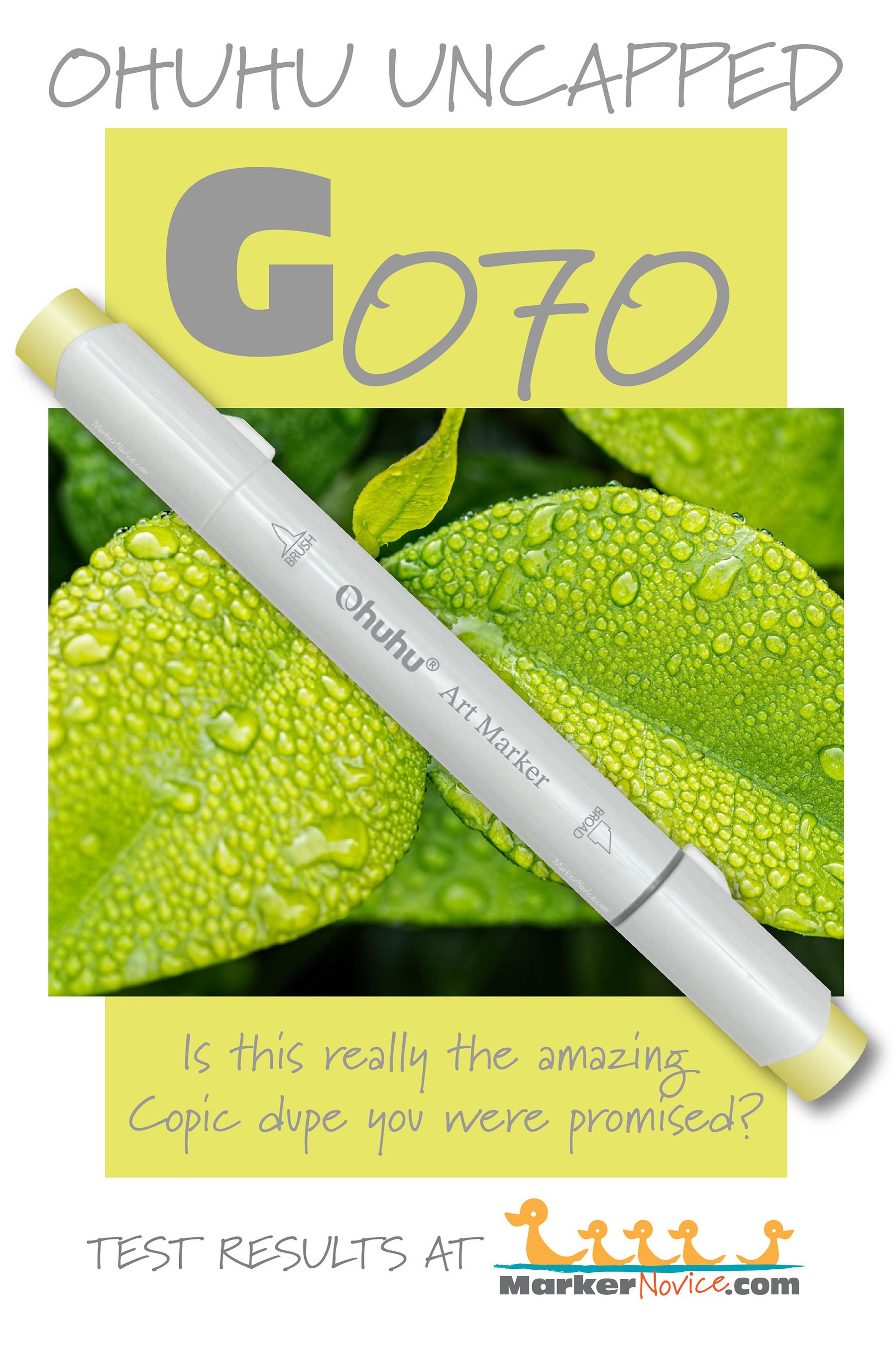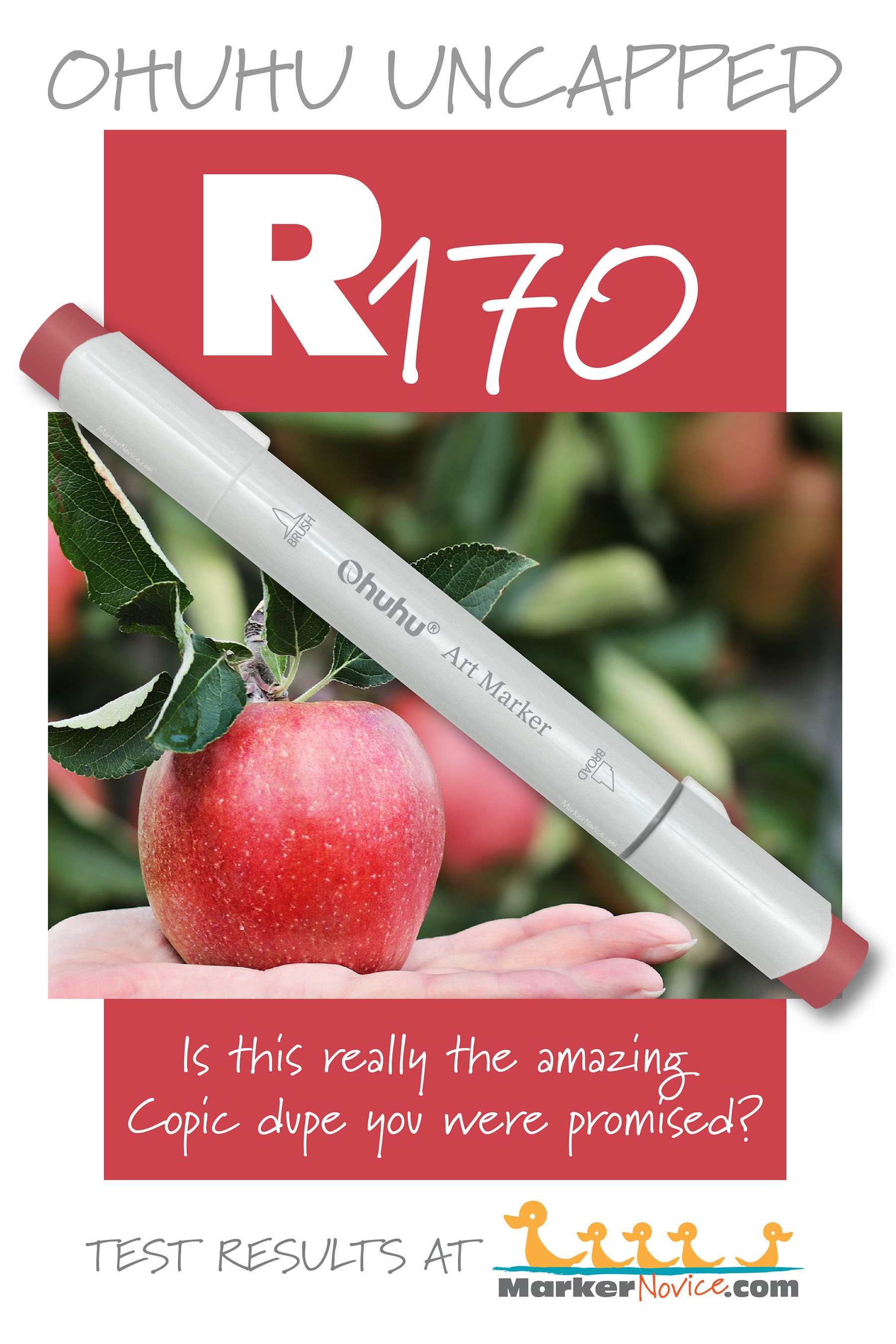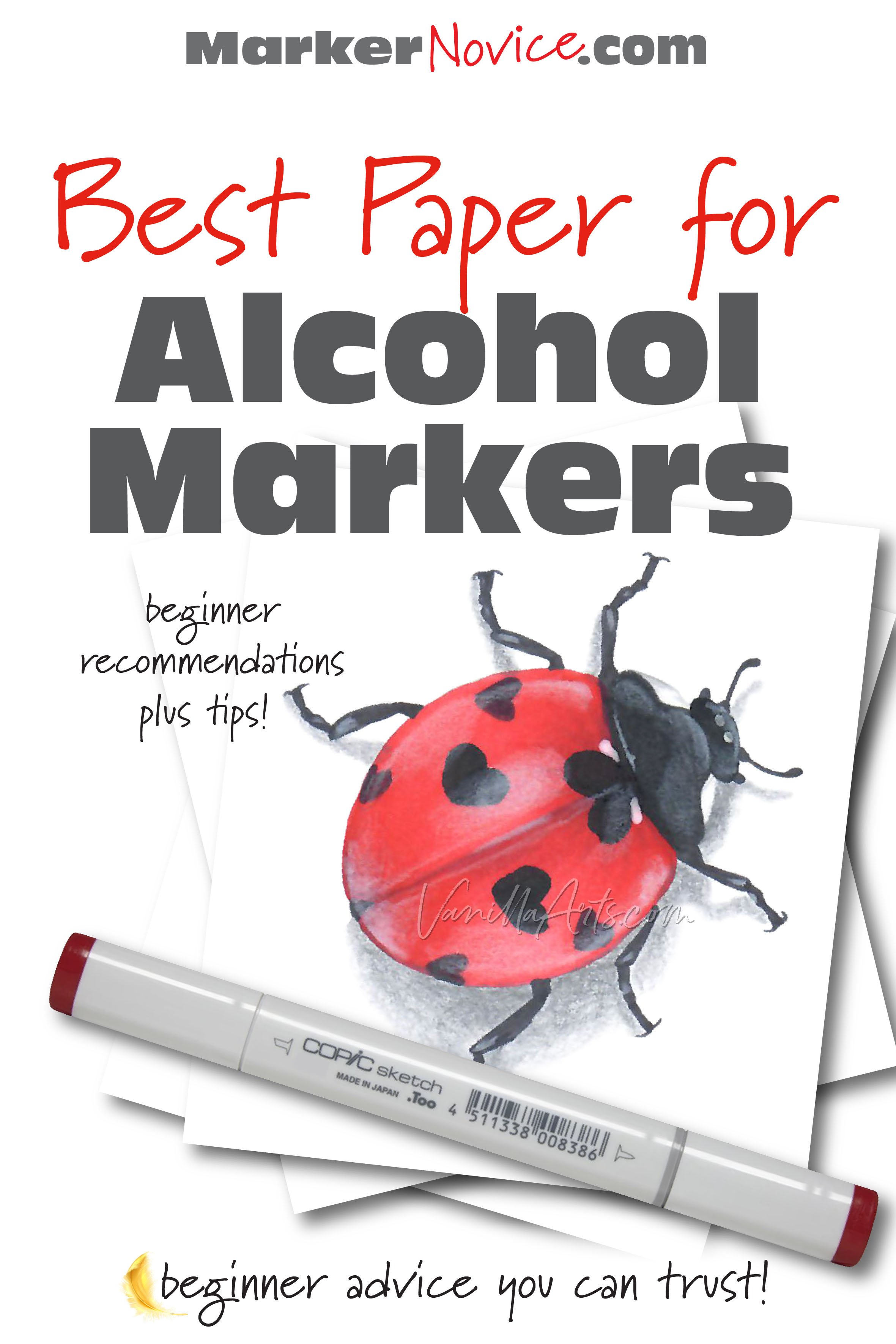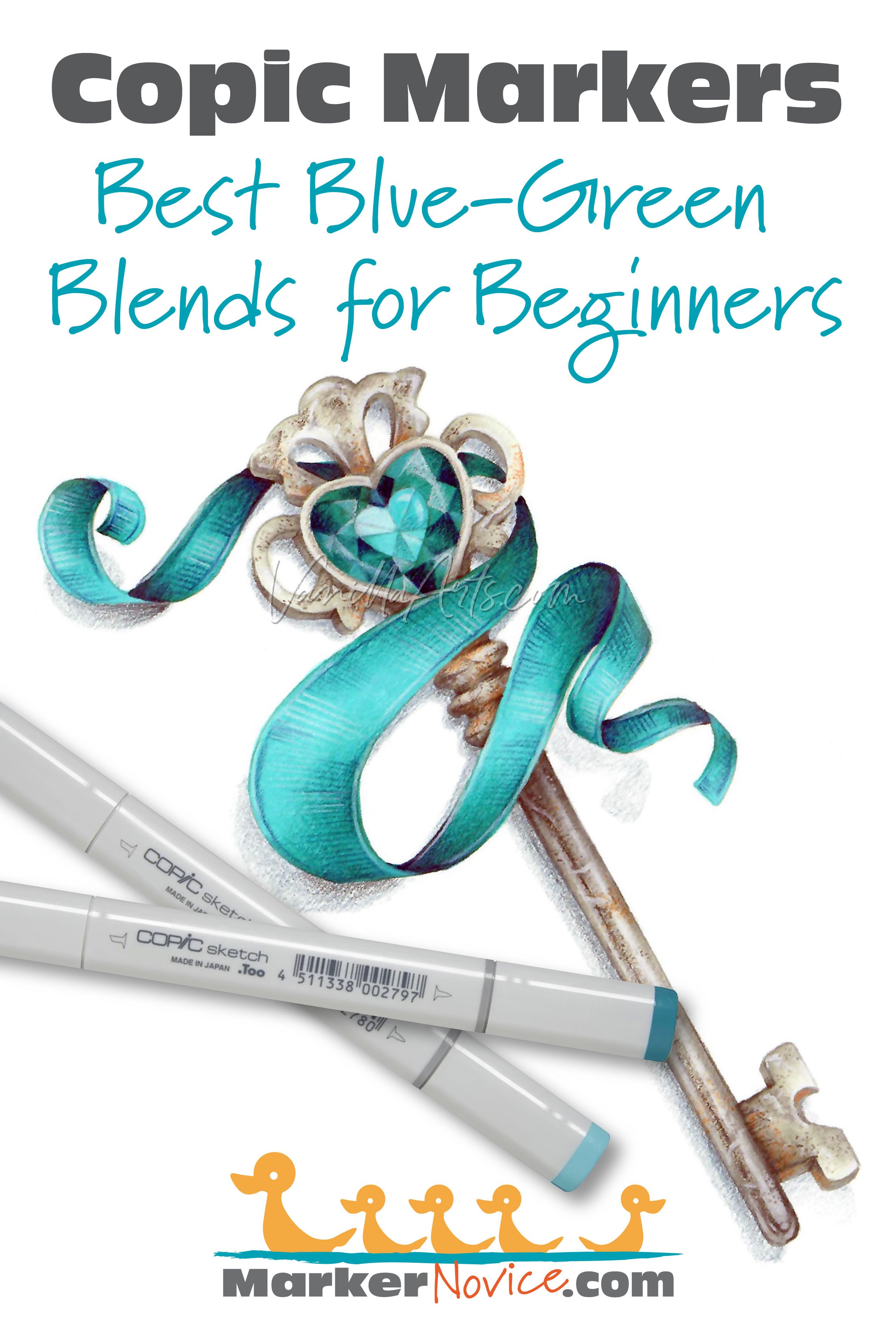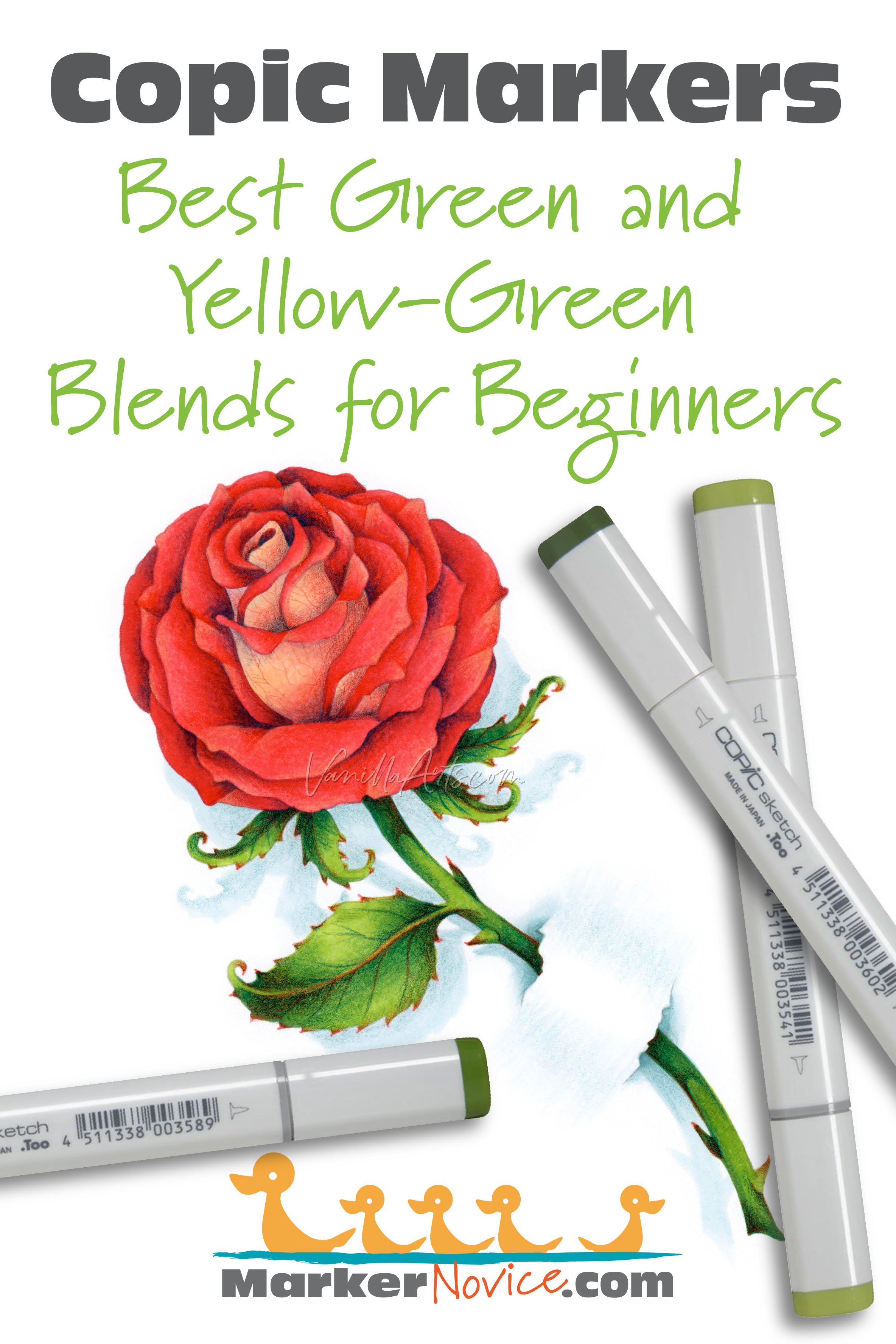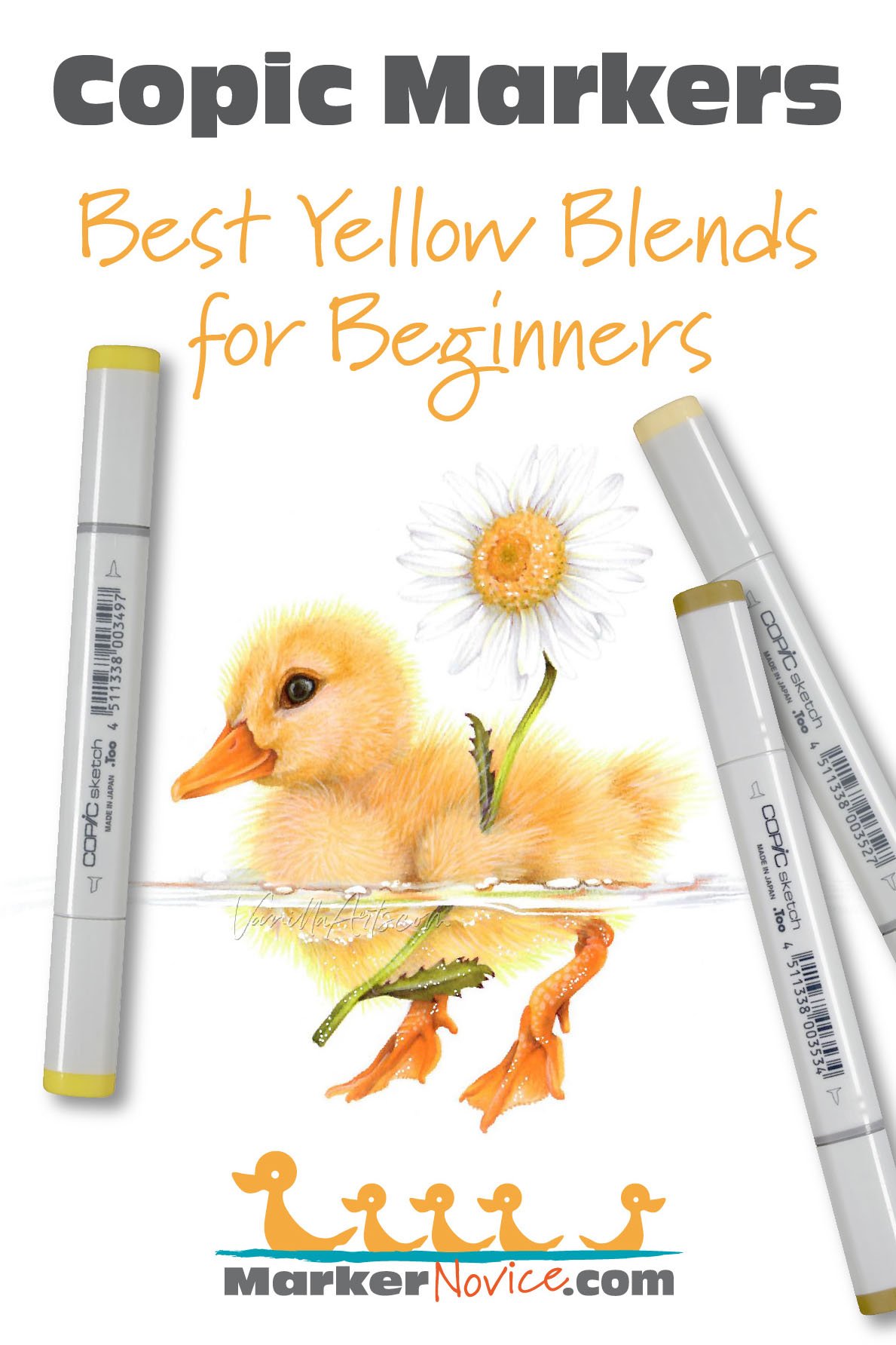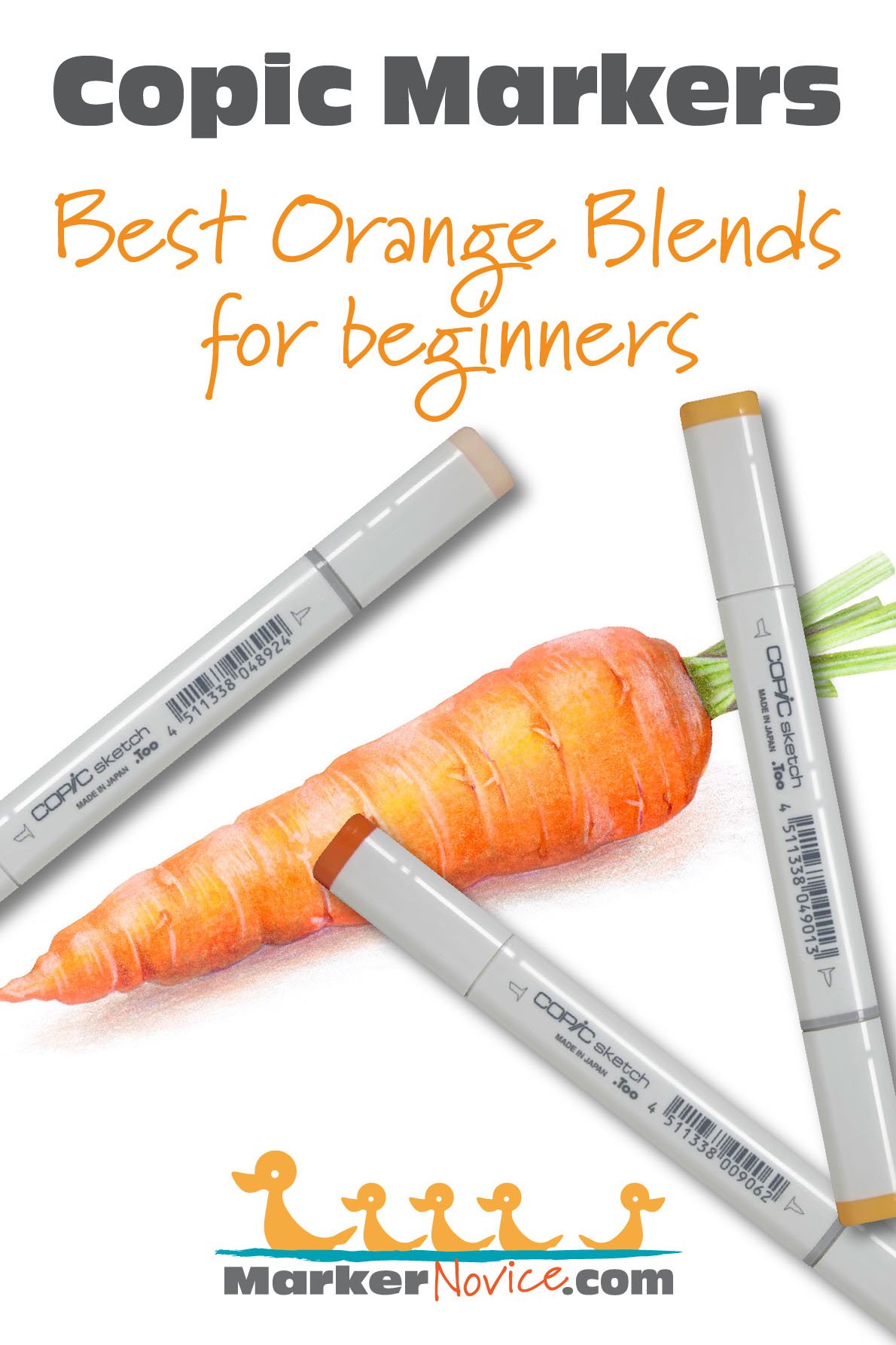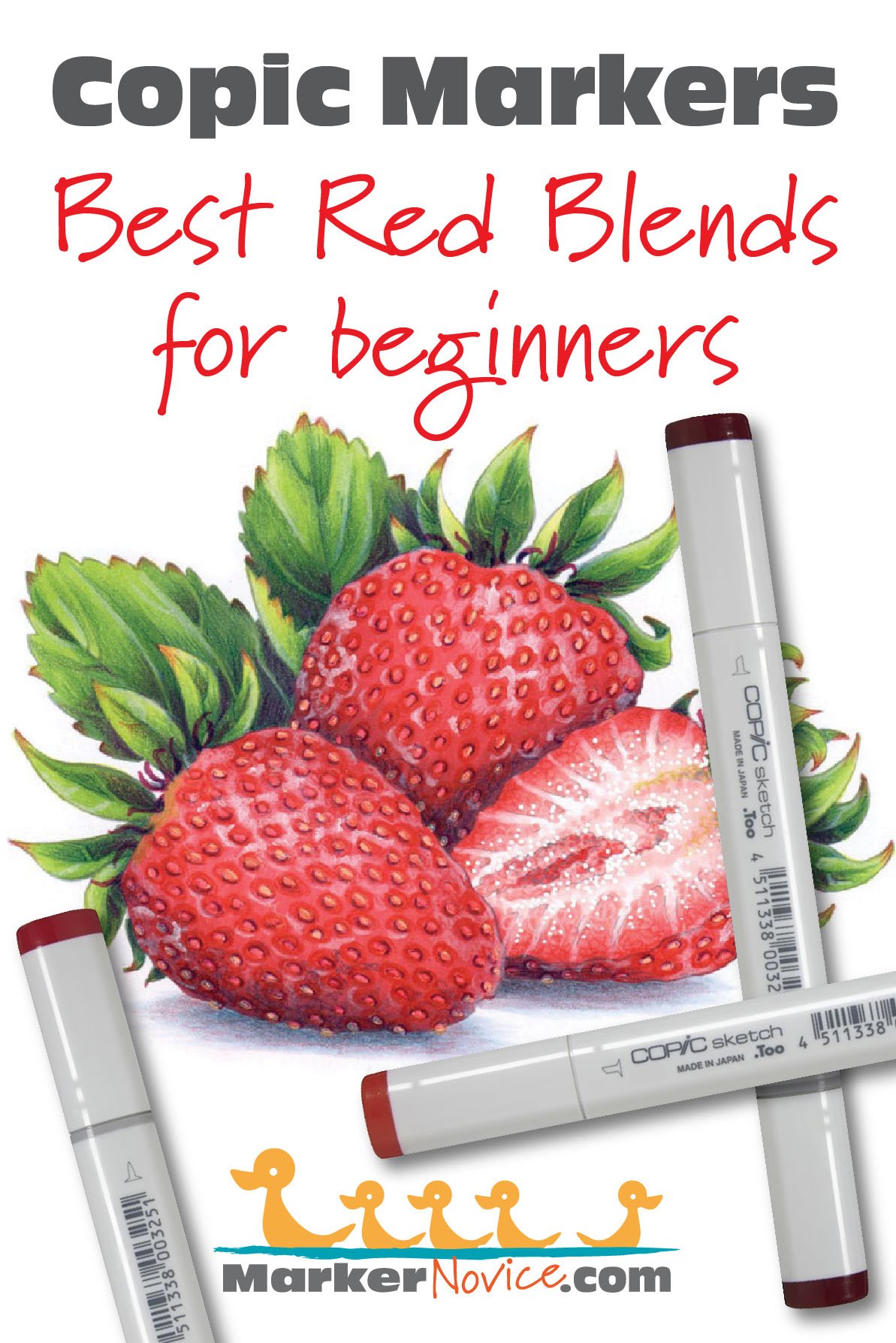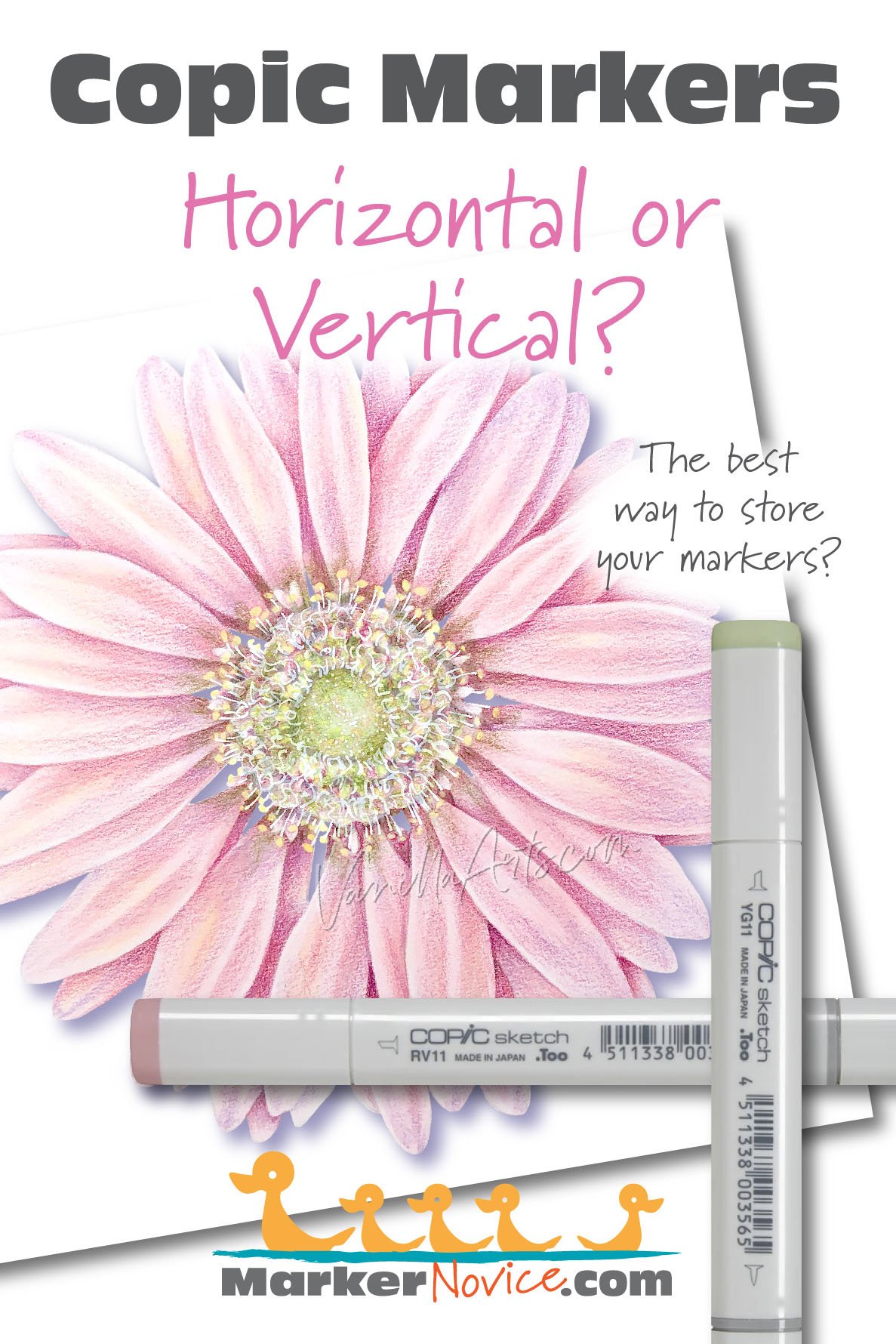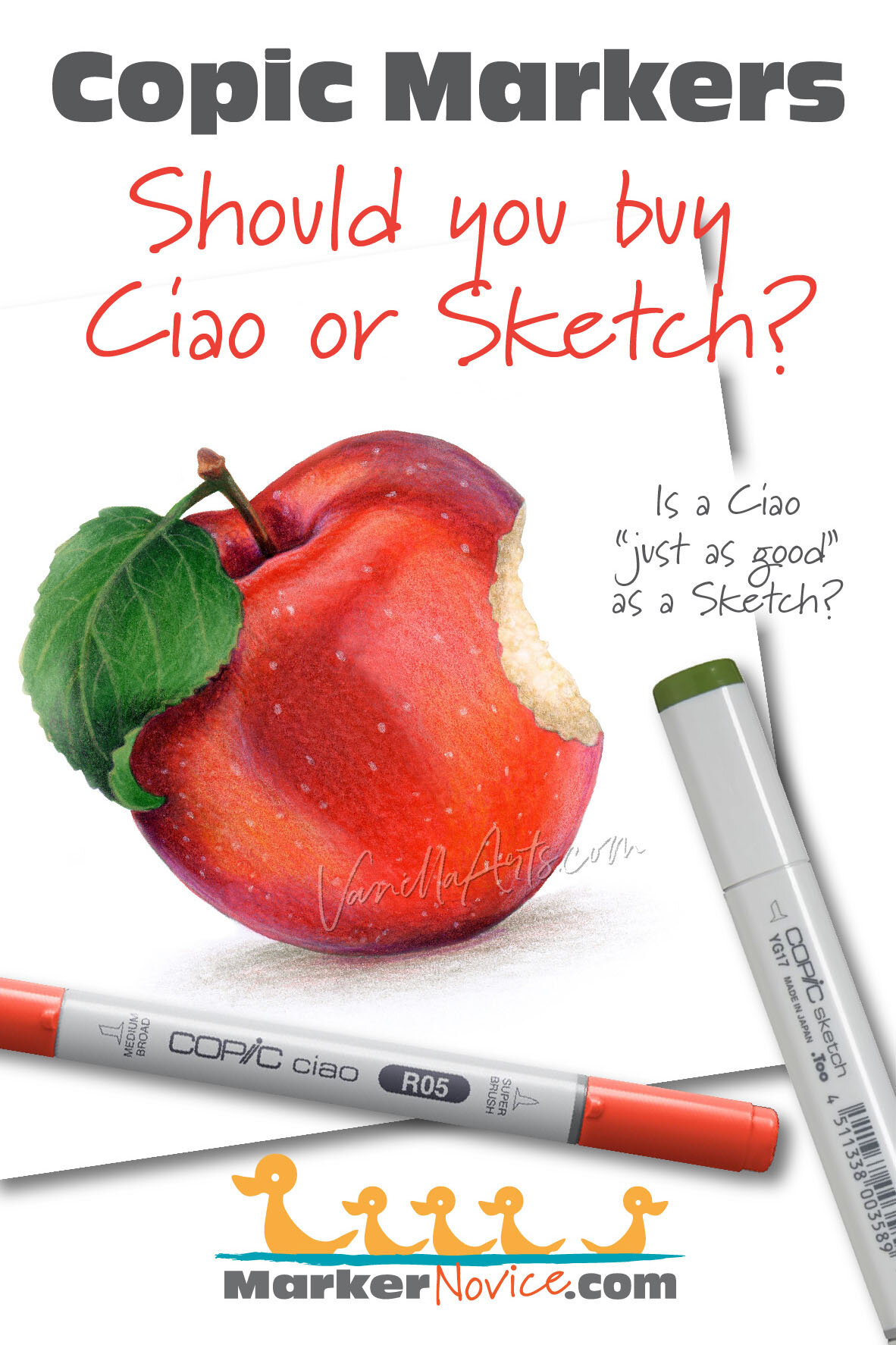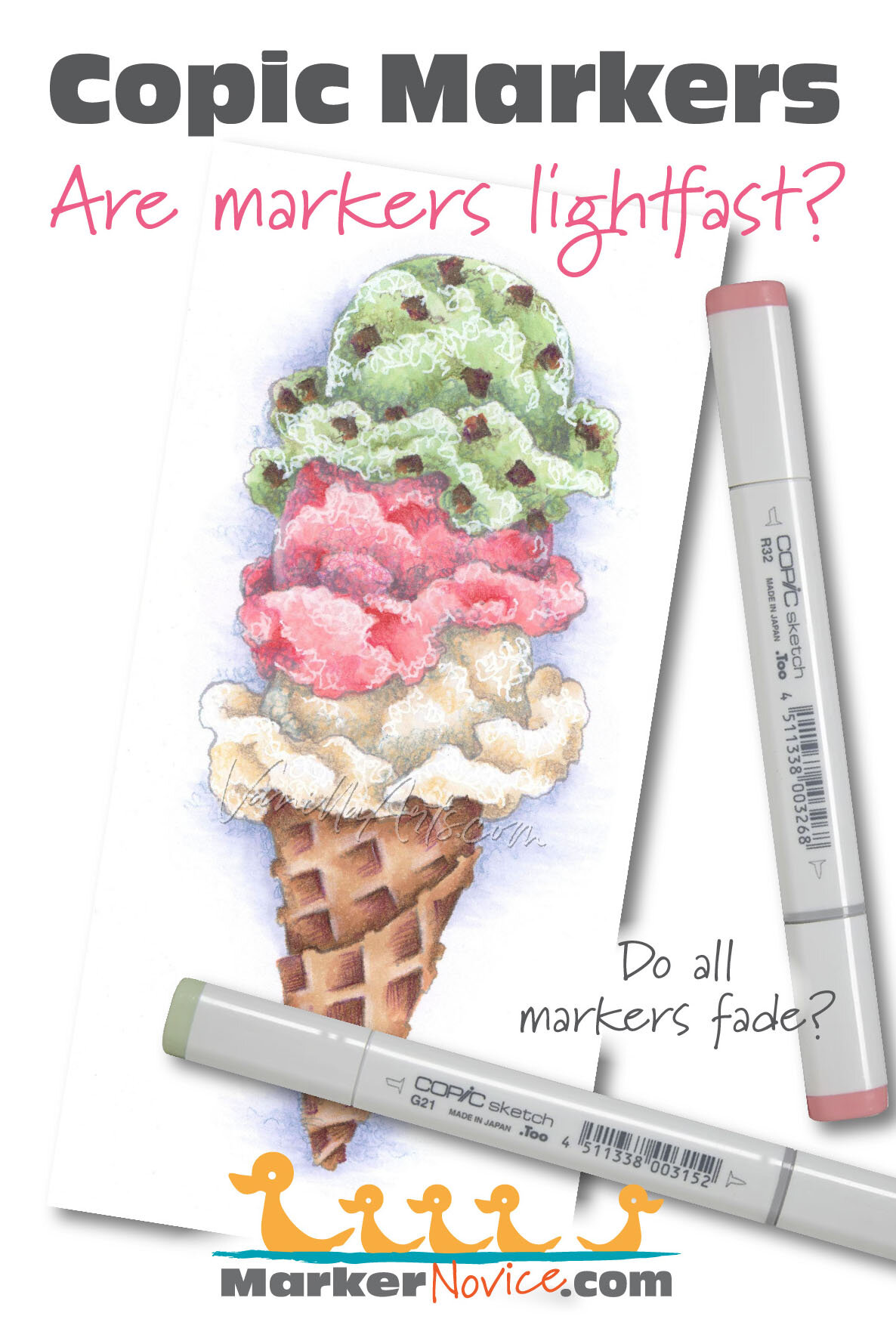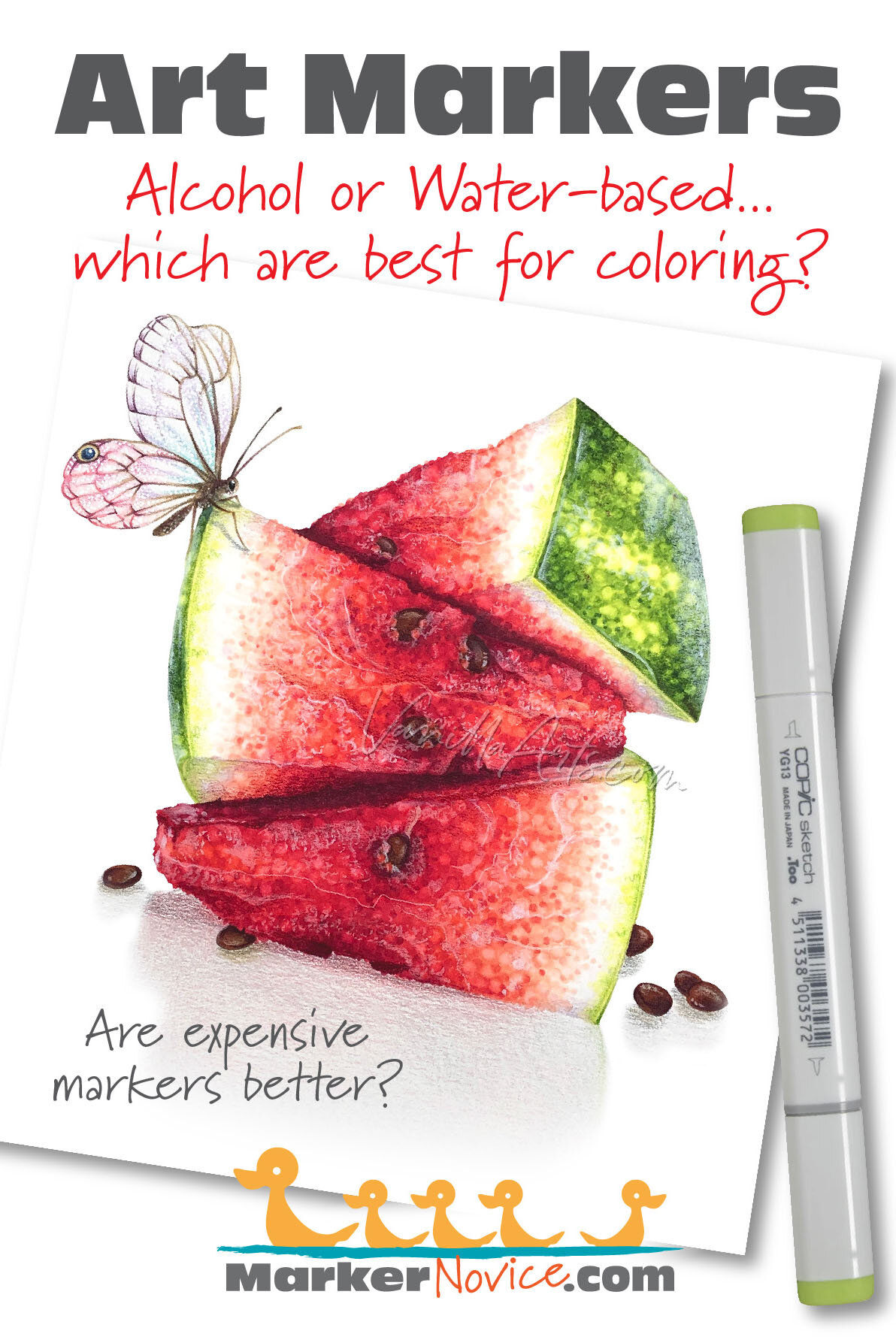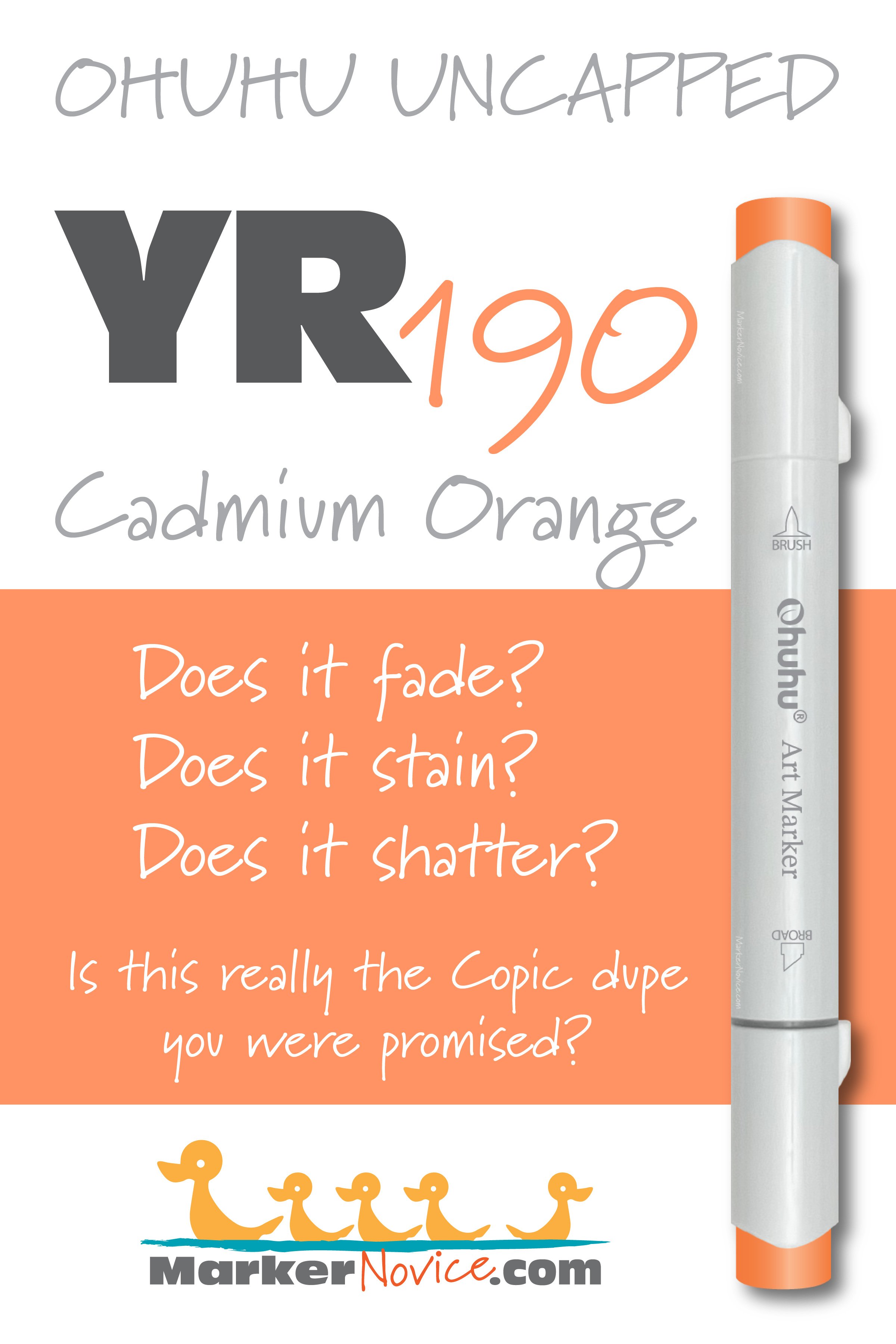You were told “Ohuhu is the Copic slayer! They’re like Copic Markers but better!”
Is it true?
Every Ohuhu Marker has different characteristics based upon its unique ink formula. No matter how great they say the marker is, test results do not lie.
So are Ohuhu markers as great as you’ve heard?
Let’s look at Ohuhu YR190 to find out.
WARNING: Ohuhu markers have numbers on the cap but not on the body of the marker. We do not recommend coloring with both caps off due to the risk of accidentally placing the wrong caps on a marker.
Test results: Ohuhu YR190 Cadmium Orange
REFILL WARNING! At this time, Ohuhu does not sell refills for YR190. To date, you must purchase a new marker when your current marker runs dry. See Ohuhu’s current list of refills here.
Temperature: A warm medium orange
Resemblance: Chrome Orange watercolor
Actual Value: N6
Unlike Copic, Ohuhu does not measure value— this is a glaring deficiency which makes finding blending combinations harder than it has to be!
All Copics are measured on a Neutral Gray value scale. The last number on the Copic cap indicates the value. We’re using the Copic scale to measure Ohuhu until Ohuhu releases a reliable value scale.
Cap Accuracy: The plastic on an Ohuhu Honolulu YR190 is both lighter and more golden than the color of one coat of YR190 ink
Copic Substitution: Ohuhu YR190 is slightly lighter but similar to Copic’s YR07. They are not the same ink due to the difference in test results but the similarity between one layer of YR07 and two layers of YR190 is strikingly close.
Note: similar colors rarely behave the same way. From experience I can tell you that Copic YR07 is a relatively easy blending marker for an orange. I recommend YR07 for beginners, it’s on my Starter Marker List, and I teach with it frequently— all because it’s easy for beginners. Ohuhu YR190 is a staining color and is more stubborn than the Copic equivalent. Keep this in mind for ALL art supplies, it’s not enough to match the color, two similar inks, pencils, or paints can behave radically different in usage. See Copic YR07 test results here.
Buildup: YR190 reaches a maximum value at 3 coats but the difference between two and three layers is hardly worth the extra ink.
Overinking: I do not recommend using more than 3 coats of YR190. As with most Ohuhu markers, four layers looks exactly like three so why waste the ink?
Shattering: YR190 shatters into two inks on contact with colorless blender— orange and a bright yellow. This ink is also startling as the sample swatch turned a brilliant florescent orange while wet and even after drying retains a strange glow because the yellow is now obvious.
Chromatography testing shows this ink’s behavior when it comes in contact with #0 Colorless Blender (solvent). High shattering colors may leak unexpected color when you make corrections or attempt to blend with any color that has a high solvent to colorant ratio. Shattering is not bad, it’s just something to be aware of.
Staining: YR190 is a stubborn staining color which is to be expected because red and orange inks tend to be more staining than average. What is unusual is the glowing reaction of this ink. Beware as you’re blending YR190 with a lighter color of ink as the solvent in the light ink may turn this ink florescent or at least yellowish.
With alcohol markers, a staining ink is generally a sign of a low quality ink. Staining inks bond to the paper fibers and are reluctant to release. Staining inks make blending harder than it has to be!
Lift: YR190 barely lifted enough from the paper and where it did move, it left the paper noticeably yellow. The odds of making a correction to a mistake made with this orange ink are slim and it may be better not to make the attempt. Notice the very dark stripe to either side of the lifting area, YR190 really piles up along the edge of the colorless blender wet zone which could damage your project.
See staining swatch. Sample was given 6 stripes of #0 Colorless Blender, drying between each stripe. Results indicate how much lifting you can expect.
Lightfast: YR190 faded by about 60% during the test period. This is extreme fading but it’s not unique to Ohuhu. Copic YR07, a similar had a minimal fade rate of less than 10%.
Samples were swatched on X-Press It Blending Card. 1 layer of ink was exposed to windowsill sunlight for 21 days. Approximately 10 hours of sun per day based on weather conditions. Note: we do not recommend displaying original marker art under these conditions.
Ink Color Family: Ohuhu hides their orange markers in several color families including R reds, YR yellow-reds, and a few Y yellows.
The Ohuhu numbering system is complete garbage and doesn’t always make sense. In an artist grade marker system, a YR family would be ink blends while R and Y families would be single color formulas. Ohuhu breaks these rules because they don’t care about maintaining an accurate numbering system.
Cap Numbering: There are only about 18 YR markers with 1, 2, and 3 digit codes and are not organized by value. I suspect this confusing system is designed to make it difficult to track marker colors.
As stated above, the Ohuhu numbering system makes no sense. The markers are not arranged in chromatic order so you can not trust the numbers to tell you whether this marker is lighter or darker than other Ohuhu markers with similar numbers.
I’m still early in the Ohuhu testing process. I will add more info to this article as I learn more and when I spot behavioral patterns.
From what I’ve learned so far, I will not be working with Ohuhu markers and I will discourage students from using them in my classes. They’re simply not worth the frustration.
Learn about YR190, a medium orange Ohuhu Marker. We swatch and test Ohuhu colors- layering, staining, lift, value, lightfastness, saturation, and cap accuracy. | MarkerNovice.com | How to color with alcohol markers

